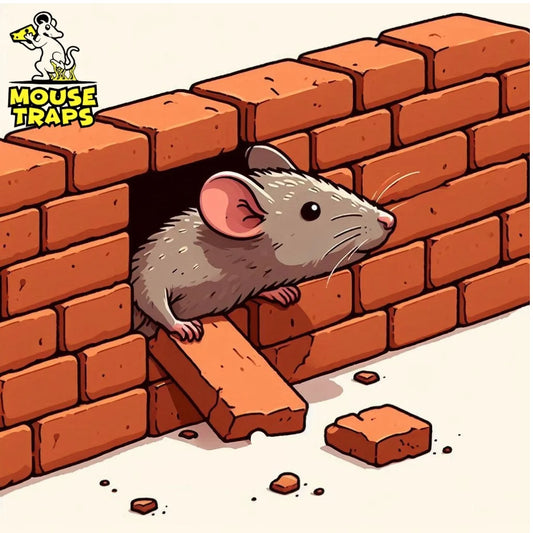Setting Up A Perfect Mouse Trap | From Trapping To Setting Them Free (Complete Guide)
If you have mice invading your home, setting mousetraps is a very effective way to catch and remove them. The process of setting up a Mouse Trap is very easy. Below we would be providing some tips and tricks to set up a foolproof mouse trap. Read the below provided instructions very carefully. What you just need to do is; understand the process and mouse baits carefully, and you can easily set up a mouse trap.
(1) Choose Your Trap
There are a variety of mouse trap designs available today. The most common and effective are pedal-style traps that use a spring-loaded bar to snap shut on the mouse's neck once the pedal is pressed. Pedal-Style Traps are recommended if you're willing for a humane and quick catch of mouse. Sticky glue traps are just good for trapping the mice. But they can cause injuries and unnecessary suffering trying to pry free a stuck mouse. For detail Baiting Factors click to Read.

(2) Bait the Trap
Baiting your trap is key to luring the mice in. Look for strong-smelling foods that mice crave. Ideal options are peanut butter, cheese (cheddar, Swiss, etc), bacon, chocolate, cereal, nuts, and seeds. Soft breads and crackers also work very well. Use a small amount of bait - about the size of a pea or chickpea. Attach bait firmly on the trigger pedal so that the mouse has to tug and nibble at it.

(3) Set the Trap
Read trap instructions carefully to set the pedal trigger properly.
- Make sure the bar firmly snaps down and resets with a hair trigger.
- Gently press to test the sensitivity. Pull the wire back gently. Place the lock bar on top of it.
- Position the trap with the pedal facing the wall. Mice tend to travel around perimeter walls.
- Place traps every 6-10 feet in high activity areas. To keep storage sheds free, from mice it's advisable to place mouse traps both on the exterior and interior of the shed.
- Point trap openings perpendicular to the wall.

(4) Check Traps Regularly
Check traps daily. Dispose of dead mice immediately. Reset any triggered traps that are empty. Replace bait if needed to ensure freshness. Reposition traps to maximize coverage if no mice are caught after a few days. Persistence is key to catch the entire mouse population. And if you want to trap the mouse Quickly into your trap, click to read Factors that affect.
(5) Safely Release Live Mice
If you catch a live mouse, take the trap well away from the home before releasing. If you want to set the mouse trap again you will need to remove the mouse by lifting up the snap wire over a garbage bin and releasing the mouse. Mice have poor eyesight and will have trouble finding way back from far away. Ensure you are not simply releasing mice to a new home nearby. Always wear gloves when disposing trapped mice.

Some Extra Precautions, Place Traps Strategically
Look for signs of mice activity and set multiple traps near:
- Food sources - kitchen, pantry, dining areas
- Gnaw marks along baseboards
- Droppings and rub marks
- Corners and hidden spaces
- Entry points like holes or cracks
- Attics, garages, and cellars
For the irritating Mice in the our homes, if you wanted to set up A trap. Our recommendation is to set up the traps strategically. Setting up a trap is not very technical process. The main trick here is you understand the process and then set the trap by knowing mice. For Locals living in UK can visit our Best Traps for trapping mice effectively.




